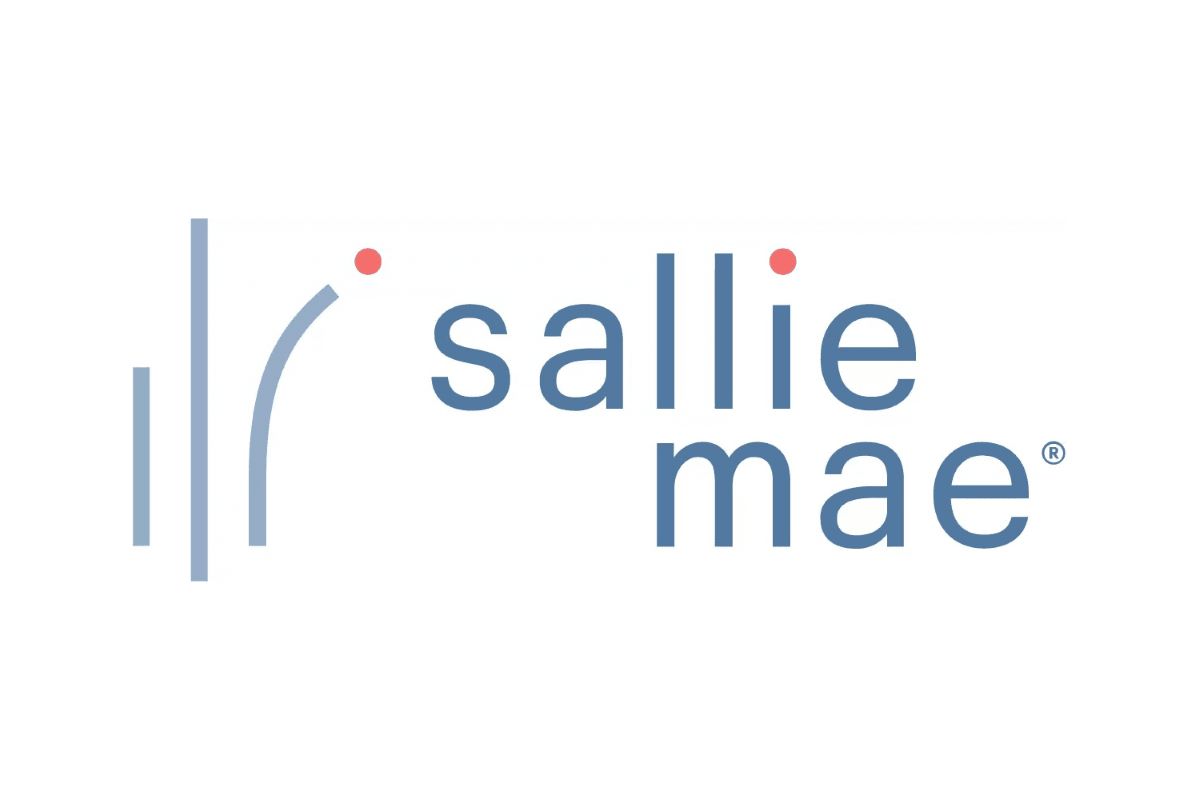

Finance
How To Consolidate Sallie Mae Student Loans
Published: January 19, 2024
Learn how to consolidate Sallie Mae student loans and manage your finances effectively. Take control of your financial future with our expert guidance.
(Many of the links in this article redirect to a specific reviewed product. Your purchase of these products through affiliate links helps to generate commission for LiveWell, at no extra cost. Learn more)
Table of Contents
- Introduction
- Understanding Sallie Mae Student Loans
- Benefits of Consolidating Sallie Mae Student Loans
- Factors to Consider Before Consolidating
- Steps to Consolidate Sallie Mae Student Loans
- Applying for Consolidation
- Repayment Options for Consolidated Loans
- Pros and Cons of Consolidating Sallie Mae Student Loans
- Frequently Asked Questions (FAQs)
- Conclusion
Introduction
Welcome to our comprehensive guide on how to consolidate Sallie Mae student loans. If you’re a student or a recent graduate burdened with multiple Sallie Mae loans, you understand the challenges of managing multiple payments and interest rates. We’re here to help you navigate the process of consolidating your loans and simplifying your repayment strategy.
Sallie Mae, a well-known student loan provider, offers various loan options to help students finance their education. While these loans can be beneficial in funding your education, managing multiple monthly payments and dealing with different interest rates can become overwhelming. Consolidating your Sallie Mae student loans can streamline the repayment process by combining them into one loan, offering the potential for a lower interest rate and more manageable monthly payments.
Whether you’re struggling to meet your monthly payment obligations or seeking ways to save money in the long run, consolidating your Sallie Mae student loans can be a viable option. This guide will walk you through the benefits of loan consolidation, factors to consider before making a decision, steps to initiate the process, repayment options, and the pros and cons of consolidation.
It’s essential to approach this process with a clear understanding of the implications and benefits of consolidating your Sallie Mae student loans. This guide will equip you with the necessary knowledge to make an informed decision that aligns with your financial goals and circumstances. So, let’s get started and explore the world of Sallie Mae student loan consolidation!
Understanding Sallie Mae Student Loans
Before diving into the consolidation process, it’s crucial to have a solid understanding of what Sallie Mae student loans are and how they work. Sallie Mae, officially known as SLM Corporation, is a leading provider of student loans in the United States. Founded in 1972 as a government-sponsored enterprise, Sallie Mae has helped millions of students finance their education.
Sallie Mae offers a range of student loan products, including undergraduate loans, graduate loans, Parent PLUS loans, and Career Training Smart Option Student Loans. These loans cover various educational expenses, such as tuition fees, room and board, textbooks, and other school-related costs.
One of the key features of Sallie Mae student loans is the flexibility they provide in terms of repayment options. Borrowers have the choice to start making full payments immediately, make interest-only payments while in school, or defer payments until after graduation.
It’s important to note that Sallie Mae loans typically come with interest rates that can be fixed or variable. The interest rates depend on a variety of factors, including the type of loan, creditworthiness of the borrower or cosigner, and prevailing market conditions. Generally, borrowers with higher credit scores and lower perceived risk are more likely to qualify for lower interest rates.
Another aspect to consider is the loan term, which is the length of time you have to repay the loan. Sallie Mae student loans offer various repayment terms, typically ranging from five to 20 years, depending on the loan product and the borrower’s financial circumstances.
It’s important to keep in mind that Sallie Mae is a private lender, separate from the federal government. This means that while Sallie Mae student loans may have similar benefits to federal loans, such as flexible repayment options, private loans do not offer the same borrower protections, such as income-driven repayment plans or loan forgiveness options.
Understanding the specific details of your Sallie Mae student loans, including the type of loan, interest rate, repayment term, and repayment options, is crucial before considering consolidation. Having a clear understanding of your loans will help you evaluate whether consolidation is the right step for you and how it can potentially benefit your financial situation.
Benefits of Consolidating Sallie Mae Student Loans
Consolidating your Sallie Mae student loans can offer several advantages that can help simplify your repayment journey. Here are some key benefits of consolidating Sallie Mae student loans:
- Simplified Repayment: One of the primary benefits of consolidating Sallie Mae student loans is that it combines all your loans into a single loan. Instead of managing multiple payments and due dates, you’ll have just one monthly payment to make. This can make budgeting and tracking your loan repayments much more convenient.
- Potential for Lower Interest Rate: Consolidation allows you to lock in a new interest rate based on the weighted average of your existing Sallie Mae loans. If the interest rate on your consolidated loan is lower than the average rate of your current loans, you can potentially save money over the life of the loan.
- Extended Repayment Term: Consolidation may provide the option to extend the repayment term, allowing you to lower your monthly payments. While this may result in paying more interest over the long term, it can provide temporary relief if you’re experiencing financial difficulties.
- Simplified Loan Servicing: When you consolidate your Sallie Mae student loans, you’ll have a single loan servicer to manage. This means you won’t have to deal with multiple entities or platforms to handle your loans, making the process more streamlined and less confusing.
- Improved Credit Score: Consolidating your loans and making timely repayments can have a positive impact on your credit score. By consolidating, you effectively close out multiple loan accounts and replace them with a single loan. This can improve your credit utilization ratio and demonstrate responsible credit management.
It’s important to note that the benefits of consolidating Sallie Mae student loans may vary depending on your individual financial situation. Before deciding to consolidate, it’s essential to evaluate your goals, budget, and any potential trade-offs, such as longer repayment terms or potential loss of federal loan benefits.
Next, let’s explore the factors you should consider before making a decision to consolidate your Sallie Mae student loans.
Factors to Consider Before Consolidating
While consolidating your Sallie Mae student loans can be an appealing option, it’s essential to carefully consider a few factors before making a decision. Taking the time to evaluate these factors will help you determine whether consolidation is the right choice for your financial situation. Here are some key factors to consider:
- Interest Rates: Before consolidating your loans, compare the interest rates of your existing Sallie Mae loans with the potential interest rate on the consolidated loan. If the current rates on your individual loans are already low, consolidation may not result in significant interest savings. On the other hand, if you have high-interest loans, consolidating could offer the opportunity to secure a lower interest rate and save money over time.
- Loan Benefits: If you’re considering consolidating federal loans into a private loan with Sallie Mae, keep in mind that you may lose certain federal loan benefits. Federal loans often come with options for income-driven repayment plans, loan forgiveness programs, or deferment and forbearance options. Evaluate whether the potential benefits of consolidating outweigh any federal benefits you may lose.
- Repayment Term: Consider how extending the repayment term through consolidation will impact your financial situation. While a longer repayment term can result in lower monthly payments, it can also mean paying more interest over the life of the loan. Assess your financial goals and ability to handle a longer repayment period before finalizing the consolidation process.
- Financial Stability: Evaluate your current financial stability and ability to make consistent monthly loan payments. Consolidation can provide relief if you’re struggling with multiple payments, but it’s important to ensure that you’re in a position to meet the obligations of a single, consolidated loan. Analyze your income, expenses, and long-term financial plans to determine if consolidation is a viable option.
- Credit Score Impact: Understand the potential impact of consolidation on your credit score. While consolidation itself does not directly harm your credit score, it’s essential to continue making timely payments to maintain a positive credit history. On the other hand, consolidation may improve your credit score over time if it helps you manage your loans more effectively.
By carefully considering these factors, you’ll be able to make an informed decision about whether to proceed with consolidating your Sallie Mae student loans. Next, we’ll explore the step-by-step process of consolidating your loans.
Steps to Consolidate Sallie Mae Student Loans
If you’ve decided that consolidating your Sallie Mae student loans is the right choice for you, here are the step-by-step instructions to help you navigate the consolidation process:
- Gather Loan Information: Begin by collecting all the necessary information about your Sallie Mae student loans. This includes loan statements, account numbers, interest rates, and any other relevant details. Having this information on hand will make the consolidation process smoother.
- Research Loan Consolidation Options: Take the time to research different loan consolidation options. Sallie Mae offers consolidation services, but it’s also worth exploring other lenders to compare interest rates, terms, and repayment options. This will help you find the best loan consolidation option for your needs.
- Check Eligibility: Review the eligibility requirements for loan consolidation. Typically, lenders will require borrowers to have a minimum credit score and income threshold to qualify. Ensure you meet these requirements before proceeding.
- Apply for Loan Consolidation: Complete the loan consolidation application. You’ll provide information about your existing Sallie Mae loans, personal details, and financial information. Make sure to double-check all the information before submitting the application. It’s also important to note that applying for loan consolidation may involve a credit check.
- Review Terms and Conditions: Once your application is approved, carefully review the terms and conditions of the consolidated loan. Pay attention to the new interest rate, repayment term, monthly payment amount, and any fees associated with the consolidation.
- Accept the Consolidated Loan: If you’re satisfied with the terms and conditions, accept the consolidated loan offer. This usually involves signing the loan agreement electronically or by mail. Be sure to read the agreement thoroughly and understand your obligations as a borrower.
- Inform Servicers: After accepting the consolidated loan, inform your previous loan servicers, including Sallie Mae, about the consolidation. Provide them with the details of your new loan servicer so that they can update their records accordingly.
- Make Timely Payments: Once your loans are consolidated, it’s crucial to make consistent, on-time payments. Set up automatic payments or reminders to ensure you never miss a payment. Paying off your consolidated loan responsibly will help you build a positive credit history and achieve financial stability.
It’s important to note that the steps outlined here are a general guide. Some lenders may have specific processes or requirements for loan consolidation. It’s always recommended to carefully follow the instructions provided by your chosen lender to successfully consolidate your Sallie Mae student loans.
Now that you’re familiar with the steps involved in loan consolidation, let’s move on to the next section, which covers the process of applying for consolidation.
Applying for Consolidation
When you’re ready to consolidate your Sallie Mae student loans, you’ll need to go through the process of applying for consolidation. Here are the steps to help you navigate the application process:
- Choose a Lender: Start by researching and selecting a reputable lender to consolidate your Sallie Mae student loans. Consider factors such as interest rates, repayment terms, customer reviews, and any additional benefits or perks offered by the lender.
- Gather Required Documents: Before applying, gather the necessary documents to support your loan consolidation application. These may include identification documents, proof of income, loan statements, and any other documentation required by the lender. Having these documents ready will streamline the application process.
- Complete the Application: Fill out the loan consolidation application accurately and thoroughly. Provide all the requested information, including your personal details, loan information, and financial information. Take your time to ensure that all information is entered correctly, as any errors or omissions may delay the processing of your application.
- Review Terms and Conditions: Carefully review the terms and conditions of the loan consolidation offer. Pay attention to details such as the new interest rate, repayment term, and any fees associated with the consolidation. Ensure you fully understand your obligations as a borrower before proceeding.
- Submit the Application: Once you’ve reviewed and confirmed the accuracy of your application, submit it to the lender. Depending on the lender’s processes, you may submit the application online or via mail. Follow the instructions provided by the lender to ensure a smooth and successful submission.
- Wait for Approval: After submitting your application, you’ll need to wait for the lender to review and approve it. This process can take some time, so be prepared for a potential waiting period. Stay in touch with the lender and follow up if necessary to get updates on the status of your application.
- Accept the Consolidated Loan: Once your application is approved, carefully review the loan offer from the lender. Consider the interest rate, repayment terms, monthly payment amount, and any other details provided. If you’re satisfied with the terms, accept the consolidated loan offer by signing the loan agreement electronically or by mail.
- Inform Previous Loan Servicers: After accepting the consolidated loan, inform your previous loan servicers, including Sallie Mae, about the consolidation. Provide them with the details of your new loan servicer so that they can update their records accordingly.
Remember, each lender may have slightly different application processes and requirements. It’s crucial to carefully read and follow the instructions provided by your chosen lender to ensure a successful loan consolidation application.
Now that you know the steps involved in applying for consolidation, let’s explore the available repayment options for your consolidated loans in the next section.
Repayment Options for Consolidated Loans
Once your Sallie Mae student loans are consolidated into a single loan, you’ll have various repayment options to choose from. These options can help you tailor your repayment strategy to fit your financial situation and goals. Here are some common repayment options for consolidated loans:
- Standard Repayment: With standard repayment, you’ll make fixed monthly payments over a set period of time, usually between 10 to 30 years, depending on the loan terms. This option is ideal if you can comfortably afford the monthly payments and want to pay off the loan as quickly as possible.
- Extended Repayment: Extended repayment allows you to extend the loan term beyond the standard repayment period, resulting in lower monthly payments. This option can provide financial relief if you need more flexibility in your budget. However, keep in mind that extending the repayment term will result in paying more interest over the life of the loan.
- Graduated Repayment: Graduated repayment starts with lower monthly payments that gradually increase over time. This option is beneficial if your income is expected to rise in the future or if you anticipate financial challenges in the short term. Graduated repayment can help you manage your cash flow during the early years of repayment.
- Income-Driven Repayment: Some lenders offer income-driven repayment plans for consolidated loans. These plans calculate your monthly payment based on a percentage of your discretionary income. If your income is low relative to your loan balance, this option can provide more manageable payments. However, keep in mind that income-driven repayment plans may result in a longer repayment term and potentially higher overall interest payments.
- Refinancing: Refinancing your consolidated loan involves obtaining a new loan with different terms and potentially a different lender. Refinancing can be beneficial if you want to secure a lower interest rate or change your repayment terms. However, refinancing may not be available or advantageous for everyone, as it depends on your creditworthiness, current interest rates, and other factors.
It’s important to thoroughly evaluate each repayment option and consider how it aligns with your financial goals and circumstances. Take into account your income, expenses, long-term plans, and any potential changes in your financial situation. You may also want to use loan calculators or consult with a financial advisor to help you decide which repayment option is best for you.
Remember to stay on top of your loan payments and make them in a timely manner to avoid any negative consequences, such as late fees or damage to your credit score. Establishing a solid repayment plan and adhering to it will help you successfully repay your consolidated Sallie Mae student loans.
In the next section, we’ll explore the pros and cons of consolidating Sallie Mae student loans to help you make an informed decision.
Pros and Cons of Consolidating Sallie Mae Student Loans
Consolidating your Sallie Mae student loans can be an effective strategy to simplify your repayment process and potentially save money. However, it’s important to consider the pros and cons before making a decision. Here are some key factors to weigh:
- Pros:
- Simplified Repayment: Consolidating your loans combines multiple payments into a single one, making it easier to manage your finances and stay organized.
- Potential Interest Savings: If the new loan offers a lower interest rate than your current loans, consolidation could save you money over the life of the loan.
- Lower Monthly Payments: Extending the repayment term through consolidation can result in more affordable monthly payments, providing temporary relief for your budget.
- Improved Credit Score: Consolidating your loans can simplify your credit profile by closing multiple accounts, potentially improving your credit score over time.
- One Loan Servicer: With loan consolidation, you’ll only have one loan servicer to deal with, simplifying communication and reducing administrative hassles.
- Cons:
- Potential Loss of Federal Benefits: If you consolidate federal loans with a private lender, you may lose certain federal loan benefits, such as income-driven repayment plans or loan forgiveness options.
- Longer Repayment Term: Extending the repayment term may result in paying more interest over time, even with potentially lower monthly payments.
- Loss of Loan Characteristics: Consolidation may eliminate specific characteristics or benefits of individual loans, such as interest rate discounts or principal rebates.
- Potentially Higher Overall Interest: While consolidation can offer a lower interest rate, it may result in higher overall interest payments if you extend the repayment term.
- Eligibility and Creditworthiness: Not everyone may qualify for loan consolidation, particularly if you have a lower credit score or limited income.
Consider how these pros and cons align with your financial goals and circumstances. It’s wise to carefully assess the potential benefits and drawbacks before proceeding with the consolidation process. It may also be helpful to consult with a financial advisor who can provide personalized guidance based on your specific situation.
Remember, consolidation is not the right choice for everyone. Analyze your financial situation, goals, and preferences to determine whether consolidating your Sallie Mae student loans is the best option for you.
In the next section, we’ll address some frequently asked questions about consolidating Sallie Mae student loans to provide further clarity.
Frequently Asked Questions (FAQs)
Here are some commonly asked questions about consolidating Sallie Mae student loans:
- Is consolidating Sallie Mae student loans right for me?
- Can I consolidate federal and private Sallie Mae loans together?
- Can I consolidate Sallie Mae loans with loans from other lenders?
- Will consolidating my Sallie Mae student loans affect my credit score?
- Can I consolidate my Sallie Mae loans multiple times?
The decision to consolidate your Sallie Mae student loans depends on your individual financial situation and goals. Consider factors such as interest rates, monthly payments, repayment terms, and any potential loss of federal loan benefits. Evaluate whether the benefits of consolidation outweigh any potential drawbacks.
Yes, you can consolidate both federal and private Sallie Mae student loans. However, keep in mind that consolidating federal loans with a private lender may cause you to lose certain federal loan benefits. Evaluate the impact on your repayment strategy and determine if the benefits of consolidation outweigh the loss of federal benefits.
Yes, many lenders offer loan consolidation services that allow you to combine your Sallie Mae loans with loans from other lenders. This can be a convenient option to simplify your repayment process by having a single loan servicer.
Consolidating your loans itself does not directly harm your credit score. However, it’s important to continue making timely payments on your consolidated loan to maintain a positive credit history. Over time, responsible repayment can improve your credit score.
Generally, you can consolidate your Sallie Mae student loans only once. However, you may have the option to refinance your consolidated loan with a different lender in the future if it aligns with your financial goals. Keep in mind that refinancing involves taking out a new loan with potentially different terms and conditions.
Remember, these are just general answers to frequently asked questions. Your specific situation may have unique considerations. If you have further questions or concerns, it’s advisable to reach out directly to your lender or seek advice from a financial professional.
Now that we’ve covered the FAQs, let’s conclude our guide on how to consolidate Sallie Mae student loans.
Conclusion
Consolidating your Sallie Mae student loans can be a smart financial move if you want to simplify your repayment process and potentially save money. It allows you to combine multiple loans into a single loan with a new interest rate and repayment term, making it easier to manage your loans and reduce the stress of multiple payments.
Before deciding to consolidate, carefully evaluate the benefits and drawbacks. Consider factors such as interest rates, repayment terms, potential loss of federal benefits, and your long-term financial goals. Thoroughly research your options and compare lenders to find the best consolidation option for your needs.
Remember, consolidation is not the right choice for everyone. It’s important to consider your individual circumstances and assess whether consolidation aligns with your financial goals and preferences. If you’re unsure, it’s always wise to consult with a financial advisor who can provide personalized guidance based on your specific situation.
Once you’ve made the decision to consolidate, follow the step-by-step process outlined in this guide. Gather all relevant loan information, submit the application to your chosen lender, and carefully review and accept the loan offer. Make sure to inform your previous loan servicers about the consolidation and set up a repayment plan that aligns with your budget and financial capabilities.
Consolidating your Sallie Mae student loans is just one step toward achieving financial freedom. Continue to make timely payments, stay on top of your finances, and explore other strategies to save money and repay your loans efficiently. With dedication and a solid repayment plan, you’ll be on your way to successfully managing and paying off your student loan debt.
Remember, each individual’s financial situation is unique, and it’s essential to evaluate what works best for you. By empowering yourself with knowledge and making informed decisions, you can gain control over your student loan debt and pave the way to a brighter financial future.














